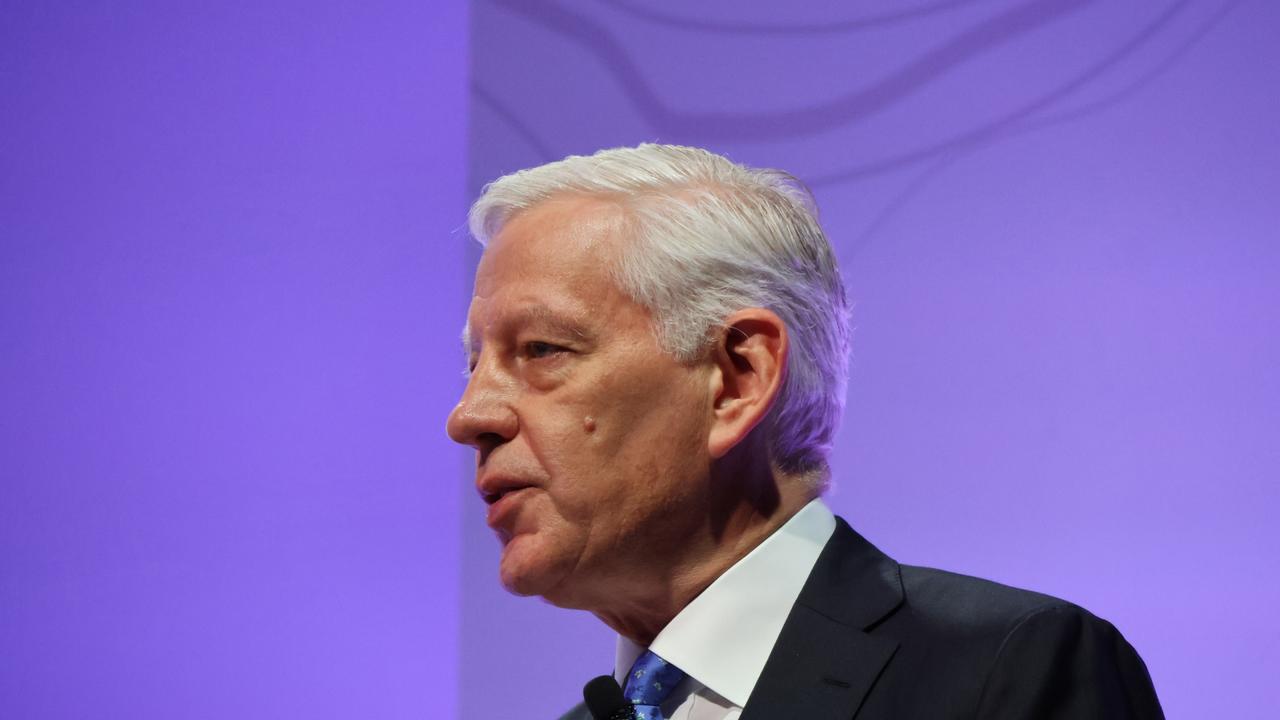Review the portfolio in turbulent times
Higher rates and the market effect of Russia’s invasion of Ukraine require a tactical response from the active investor.

Business
Don't miss out on the headlines from Business. Followed categories will be added to My News.
The war in Ukraine has underscored volatility for assets in local and global markets. Given the ongoing challenges, it is important for pragmatic investors to accommodate this volatility and look it in the eye.
The US Federal Reserve chair Jerome Powell warned financial markets to prepare for faster interest rate increases and reiterated that recessions were not caused by tighter monetary conditions.
Mr Powell also said the Fed could raise rates by 50 basis points or 0.5 per cent as early as May. This is off the back of a US rate rise earlier this year of 25 basis points.
On top of that this week the Fed signalled it will start reversing money printing – that is, it will reduce its bond holdings at a maximum pace of $US96bn a month.
As a result of these comments, US 10-year bonds and Australian bonds have both seen yields lifting and prices dropping.
From a markets point of view, the conflict in Ukraine is a catalyst for short-term effects seen in supply chains and the flow-on into interest rates and inflation in the medium term. It’s a profound situation and it should force all investors to look further at tactical asset allocation.
Underscoring the Fed announcing its first rate increase since 2018 was a wider indication of a further possible six rate rises in 2022 to a range of 1.5 to 1.75 per cent. In other words, the Fed is now indicating more restrictive policy settings as early as 2023.
Markets are now factoring in a Fed funds rate above 2.5 per cent by early 2023 (the first time since 2012), which would indicate what used to be called “neutral policy settings”. Accordingly, analysts have raised their end-2022 and end-2023 forecasts for the yield of US 10-year Treasuries to 2.5 and 3 per cent respectively.
We can expect commodity prices and inflation will be significantly higher over the next two years than previously thought. Yet, economists also expect the hit to global growth to be small, allowing most central banks to tighten policy in line with their pre-Ukraine plans. In the near term, the outlook for financial markets will depend on the evolution of the conflict.
Meanwhile, take note of the composition of the domestic Australian index with its exposure to materials (resources), under-representation in growth companies and more favourable projections for the Australian dollar.
That should be considered against the euro and the pound driven by relative policy settings. The more favourable outlook for commodities and more favourable data from China means I have increased exposure to Australian equities. What to do?
● For the first time in nearly a decade, our weighting in a balanced risk profile in domestic Australian equities is now marginally higher than for developed market equities. This marginal increase is in the large cap area and as such I am not recommending any increase to mid-cap or broad cap managers.
● A small increase in emerging market equities could be expected on the back of China looking at both policy easing and more solid growth targets.
● This could be combined with a more favourable outlook for equities and currencies in Latin America, to account for the fact that we now expect commodity prices to generally be higher by the end of 2023. Note, I believe parts of emerging Europe are uninvestible and our choice of managers reflects this position.
● A decrease in developed market equities further reflects my negative view on the US. I project that US equities will underperform their DM counterparts. That’s because US technology stocks, which dominate indices, will be hit harder by rising discount rates. They will suffer from a continued normalisation in consumption patterns as the economic effects of the pandemic ease.
In times like these, I always look at balancing risk with reward. These changes reflect an expectation that equities will rise but their gains will be smaller than expected, especially in real terms, owing to headwinds from rising discount rates and high inflation.
I cannot stress enough the importance of asset allocation to assist in balancing risk, reducing volatility, and enhancing returns in the months ahead as we navigate the current environment.
Will Hamilton is the managing partner of Hamilton Wealth Partners.
will.hamilton@hamilton
wealth.com.au
Originally published as Review the portfolio in turbulent times


